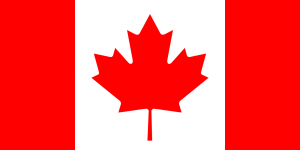 Canada’s Transport Minister Marc Garneau announced new restrictions on hobby drones today, in what he said is a response to the increased number of drone sightings near airports. Calling the possibility of a drone collision with a passenger aircraft a “nightmare scenario,” Garneau outlined new rules which will be effective immediately. Canada Transport says that the move is a “measure to prevent the reckless use of drones that is putting the safety of Canadians at risk.”
Canada’s Transport Minister Marc Garneau announced new restrictions on hobby drones today, in what he said is a response to the increased number of drone sightings near airports. Calling the possibility of a drone collision with a passenger aircraft a “nightmare scenario,” Garneau outlined new rules which will be effective immediately. Canada Transport says that the move is a “measure to prevent the reckless use of drones that is putting the safety of Canadians at risk.”
The new rules state that recreational operators are restricted from flight over 90 meters (about 295 feet); at night; within 75 meters (about 250 feet) of building, vehicles or people; and within 9k (about 5.6 miles) of airports and other aircraft facilities. The rules relate only to recreational users: “Operators of drones for commercial, academic or research purposes are not affected by this measure. The rules that are already in place are effective and most commercial users operate their drones in a safe manner.”
The new law would impose fines of up to $3,000 for infractions, and Canada Transport asks witnesses of illegal drone use to call local law enforcement. Members of the Model Aeronautics Association of Canada (MAAC) flying at MAAC fields or events do not fall under the new regulations.
While Garneau says that the new rules should not affect the commercial drone industry, the move prompted quick response from industry advocates. The Drone Manufacturers Alliance, an organization representing manufacturers of most recreational drones produced, said that they believe the new rules “will provide only a negligible increase in safety while sharply curtailing the ability of Canadians to explore, photograph their country, and teach their children about science and technology. ”
“These sudden regulations, imposed without input from Canada’s tens of thousands of responsible drone pilots, will hurt innovation and education without a corresponding improvement in safety,” said Kara Calvert, Director of the Drone Manufacturers Alliance. “The overwhelming majority of Canadian drone pilots operate safely and responsibly, and they are the ones who will be hurt by far-reaching restrictions – not the tiny number of irresponsible operators who have already violated existing drone safety rules. The Drone Manufacturers Alliance expects our members’ customers to fly safely and responsibly, and our years of experience show that technology and education provide a better solution than a hastily-written ban.”
Pointing out that there has never been a single confirmed collision between a civilian drone and a manned aircraft, the Alliance statement says that harsher regulations can only harm drone operators while doing little to enhance safety.

Miriam McNabb is the Editor-in-Chief of DRONELIFE and CEO of JobForDrones, a professional drone services marketplace, and a fascinated observer of the emerging drone industry and the regulatory environment for drones. Miriam has penned over 3,000 articles focused on the commercial drone space and is an international speaker and recognized figure in the industry. Miriam has a degree from the University of Chicago and over 20 years of experience in high tech sales and marketing for new technologies.
For drone industry consulting or writing, Email Miriam.
TWITTER:@spaldingbarker
Subscribe to DroneLife here.







75m from animals, people, vessels ect. What kind of regulator uses ect?
Only a few places on the tundra are 75m from animals.